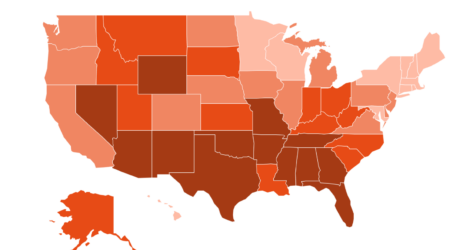It’s breast cancer awareness month, and women are paid 80 cents for every dollar made by a man.
Think those two things are unrelated? Think again: The gender wage gap and other disparities make it harder for women to afford treatment, for breast cancer or anything else. Women are more likely to be employed in low-wage or part-time jobs with no benefits and far less likely than men to have health insurance through their work—and since they are more likely to be covered as dependents, women are more susceptible to losing health coverage if family benefits are reduced or in the event of divorce.
It’s no wonder, then, that women are also more likely than men to forgo medical treatment because of high drug prices. In a survey by Kaiser Health, 22 percent of women reported leaving a prescription unfilled or rationing doses because of cost; only 12 percent of men reported doing the same.
One thing is clear: when profit-maximizing “pharma bros” hike up the price of drugs, they are disproportionately harming women.
Women, and especially women of color, are poorer on average than men—and they also use therapeutic drugs at a higher rate. In the Kaiser survey, 56 percent of women also reported using at least one prescription drug, compared to just 37 percent of men. That gap in therapeutic drug usage is in part because of reproductive health needs and treatment for conditions more likely to affect women.
Of 2017’s top 12 highest-grossing drugs in the U.S., three of them treat conditions that afflict women disproportionately. Their costs are rising, and female patients are suffering because of it.
About two-thirds of cases of macular degeneration, which is common in seniors, impact women—largely because they live, on average, longer than men. An annual course of Eylea, a drug treating the condition, costs around $15,000.
The nearly 20-year-old breast cancer drug Herceptin, increased in price by 78 percent between 2005 to 2017. Lower-cost generic competition is finally on the horizon, which will likely bring the price down, but at this moment, Herceptin carries an annual price tag of over $60,000.
Between 2012 and 2018, the price of Lyrica—a drug that treats the neuropathic disorder fibromyalgia that is commonly diagnosed in women—more than doubled, despite the fact that the drug has been on the market for 14 years. Of the top-selling drugs in America in 2017, none had a higher price hike over this six-year period than Lyrica. Today, a one-year course of treatment costs about $7,500.
Herceptin, Lyrica and Eylea netted more than $18 billion in total for their makers last year.
While the poorest women may be eligible to receive these and other medications for free or at little cost through patient assistance programs, millions of low-and middle-income women who don’t qualify for patient assistance must foot some, if not all, of the bill themselves. That can drive some unfathomable choices, like rationing doses or forgoing treatment altogether. 80 percent of single parents are women, and they disproportionately bear the financial burden of prescription drug costs for their children. Many of these mothers live in terror at the prospect of not being able to pay for their children’s medical treatment.
Sabrina Burbeck, from Old Town, Maine, is one of those mothers. Her youngest of two sons, Dakota, has Type 1 Diabetes and needs insulin to survive. Sabrina has state-subsidized insurance, which pays for the bulk of her son’s treatment—but a one-month supply of Humalog, the insulin prescribed for her son, costs her $325. (That’s not including test strips or other supplies, either.) After struggling to find childcare, Sabrina recently went back to work; she can’t afford the coverage offered by her employer, so she limits her hours to remain eligible for state-sponsored insurance.
“I struggle, because I want those hours,” she said. “I want to be able to provide adequately for my family. But one of my paychecks wouldn’t even cover his insulin. How am I to keep my child healthy and alive at prices like that?”
In recent years, there have been renewed efforts to tackle the problem of high drug prices; the Trump administration even released a plan to do so this past summer. But these efforts uniformly fail to address the systemic disparities around income, poverty and usage that make it harder for women to access treatment.
There are, to be sure, millions of men and fathers who face the same crushing fear as women like Sabrina—men who struggle to provide for their families and worry every day that high drug prices will overwhelm them. But because women are poorer on average than men and more often the primary caregiver, lack of access to medicines has a disproportionate impact along gender lines.
This breast cancer awareness month, let’s make sure that the cost of breast cancer treatment and the distinct ways that women are impacted by high drug prices are part of the conversation—and, ultimately, the solution.
Priti Krishtel is the Co-Executive Director of I-MAK.org, a global non-profit organization comprised of senior attorneys, scientists and health experts who have worked to lower drug prices through the patent system for 15 years. She can be reached at @pritikrishtel.





